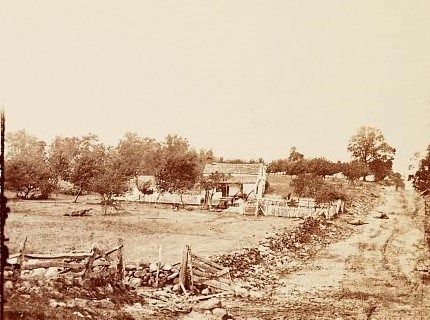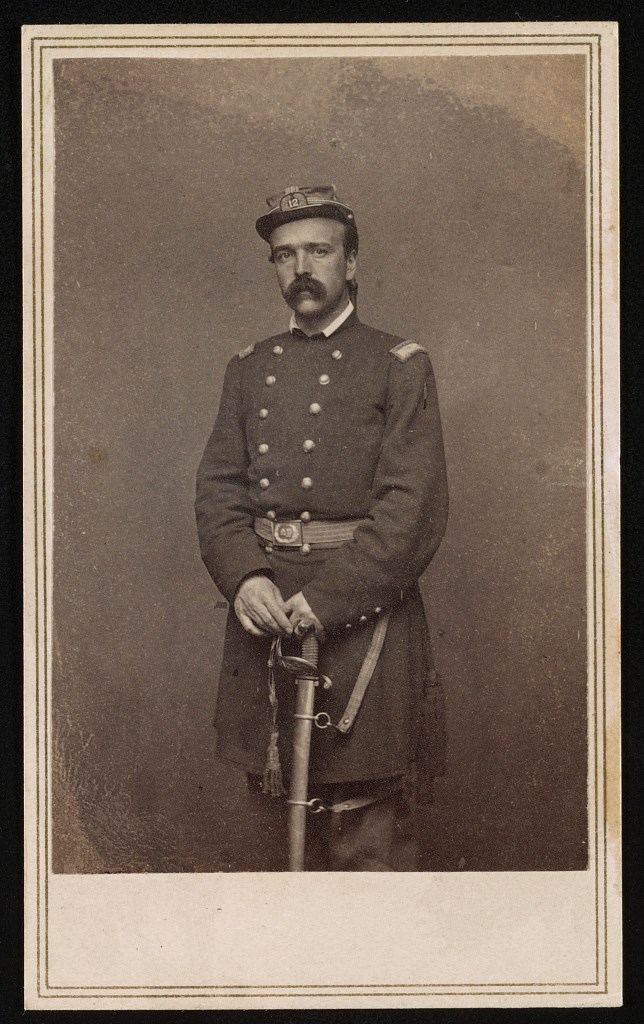Last updated: September 22, 2022
Article
General George Meade's Forgotten Council of War

Library of Congress
When one thinks of councils of war and decision making at Gettysburg, the mind immediately jumps to the famous council held at General George Meade's headquarters late on July 2, during which multiple generals gathered in the small home of Lydia Leister, making decisions that ultimately helped shape the nation.
Yet, this was not the only Council of War General Meade held at Gettysburg; another one took place on July 4. Due to the damage around the Leister farm from the cannonade that preceded Pickett’s Charge the day before, however, as well as some flooding from the torrents of rain that fell on July 4, this second council of war convened in a different location, at the headquarters of Sixth Corps brigade commander Thomas H. Neill, which was likely in a private home somewhere along the Baltimore Pike. In addition to this change in location, the attendees to this forgotten council had also changed. Absent were Major General Winfield Scott Hancock, commander of the Second Corps who had been commanding a wing of the army, and Brigadier General John Gibbon, acting commander of the Second Corps, who had attended the July 2 council, but who both been wounded on July 3 and were thus unable to attend on the 4th. Also, Following Meade's last council held late on July 2, Meade's army had endured yet another hard day of fighting, and the men in blue were worn down. As he did at the earlier meeting, Meade began by asking his commanders about the status of their commands and then asked their thoughts on different courses of action the army should take.

Library of Congress
Not much was written about this second council, at least not at that moment. Following the meeting, Meade sent a report to Major General Halleck in Washington. In it, he stated, “I make a reconnaissance to-morrow, to ascertain what the intention of the enemy is…should the enemy retreat, I shall pursue him on his flanks,” which offers a hint about the consensus that was reached or decision that was made at the July 4 council.[1] The next day, Meade's cavalry discovered that the Confederates were in full retreat. The Sixth Corps was sent down the Fairfield Road in guarded pursuit while Union cavalry continued to follow and harass the heels of the retreating foe in a series of skirmishes. Though most of the army remained at Gettysburg on July 5-6 to bury the dead and gather the wounded who had been left on the field, Meade still worked to pursue the Army of Northern Virginia, as was discussed and decided upon in the meeting.[2]
Meade has often been criticized for his July 2 council of war. Many contemporaries and later scholars believed Meade’s tendencies to consult with other commanders and, primarily, his perceived slowness at pursuing Lee were negative traits disqualifying him from command. Similar criticisms were hurled at Meade for his meeting on July 4. During the lengthy analysis and trial with the Joint Committee on the Conduct of the War in 1864, when Major General Daniel Sickles aggressively maligned Meade in the hopes of salvaging his own reputation, more detailed reports of this overlooked July 4, 1863, council were recorded. The Joint Committee, established in 1861, often served as a forum where spurned generals could blame others by accusing them of misconduct. Sickles himself was far away from the July 4 meeting, being treated for his severe July 2 wound; still, he offered an analysis of the meeting. He claimed that the vote to not pursue aggressively was a mistake and “our troops were in good condition and eager to renew the fight,” despite the fact that he was not present to review his troops and that his Third Corps had been decimated on the 2nd.[3]
Army of the Potomac Chief Engineer Major General G.K. Warren recalled the meeting on the 4th as fairly informal but noted there was a discussion on whether the army should move, and where. “That question was not decided,” he testified, “for the reason that we did not know enough about the enemy; and to have gone off the battle-field before the enemy did would have been giving up the victory to them. And then, if the enemy had gone, it was a question which way to go after him.”[4] The generals were unsure whether to proceed to the mountains after the enemy or down through Frederick which was the army’s supply base. Meade agreed with this, stating that the council was focused on a “plan of action in reference to pursuing the enemy.”[5] It is important to note Major General David Birney’s testimony criticized Meade for not more aggressively pursuing the enemy, but also offered insight into the split opinion at the meeting. Ultimately, he said the decision on the 4th was to remain 24 hours before moving. Though Birney could not specifically remember who voted for what action, he noted that several generals “voted on Saturday night for retiring to another position.”[6]
The most detailed account of the council was given by Major General Daniel Butterfield, Chief of Staff at Gettysburg. Butterfield noted that the object of the meeting was the answering of four main questions: “Shall the army remain here?” “If we remain here, shall we assume the offensive?” “Do you deem it expedient to move towards Williamsport, through Emmettsburg?” “Shall we pursue the enemy if he is retreated on his direct line of retreat?”[7] Butterfield’s minutes of the meeting revealed the names Birney had forgotten. Major General David Birney, Major General John Sedgwick, Major General George Sykes, Brigadier General William Hays, and Brigadier General Gouverneur Warren preferred to stay in Gettysburg, while Major General John Newton, Major General Alfred Pleasonton, and Major General Henry Slocum opposed remaining and Major General Oliver Howard was undecided.

during the Gettysburg Campaign, was a frequent critic of George Meade.
Library of Congress
Despite the criticisms levied at Meade then and now, historian and Meade scholar Dr. Jennifer Murray argued in a previous Gettysburg National Military Park blog post that the commanding general's actions at these councils of war offer insight into his successful leadership style. As Murray writes, “in seeking consensus from his generals and then allowing them to vote on the ensuing course of action, Meade demonstrated a collaborative decision making process.”[8] Meade took that approach on July 2, and it appears he did the same just two days later.
Meade’s account of the July 4 council was quite different from the others. He addressed the accusations of indecision, and admitted the consultations “were probably more numerous and more constant in my case, from the fact I had just assumed command of the army, and felt that it was due to myself to have the opinions of high officers before I took action on matters which involved such momentous issues.”[9] After all, Meade had only assumed command of the Army of the Potomac on June 28, a mere six days prior. It is clear that though Meade certainly had his own plans and opinions that were guiding his decisions, he highly valued the input of his corps commanders. He used that consensus to support his decision to stay and fight on July 2 and used the consensus again to support rest and caution rather than aggression on July 4. As Butterfield’s record of votes states, it is clear the majority of corpscommanders supported this decision. Additionally, despite Butterfield’s insistence that the estimates wereinaccurate, on July 4 each corps commander had given Meade an estimate of their strength which placed the army at a mere 51,000 effective infantry from the 78,000 claimed on June 10.[10] Given these numbers, it is hardly surprising that Meade decided on caution.
Ultimately, the Congressional investigation into Meade’s decision making, which relied heavily on accounts of the two Councils of War, did not end in Meade’s dismissal; he continued to lead the Army of the Potomac until the end of the war. Accusations by detractors such as Daniel Sickles were groundless; Sickles, always of a political mind, sought vengeance to repair his reputation and bruised ego. Meade’s leadership was based on respect for his subordinates and their reports or opinions, and he kept both those in mind as he held his councils on July 2 or 4.
